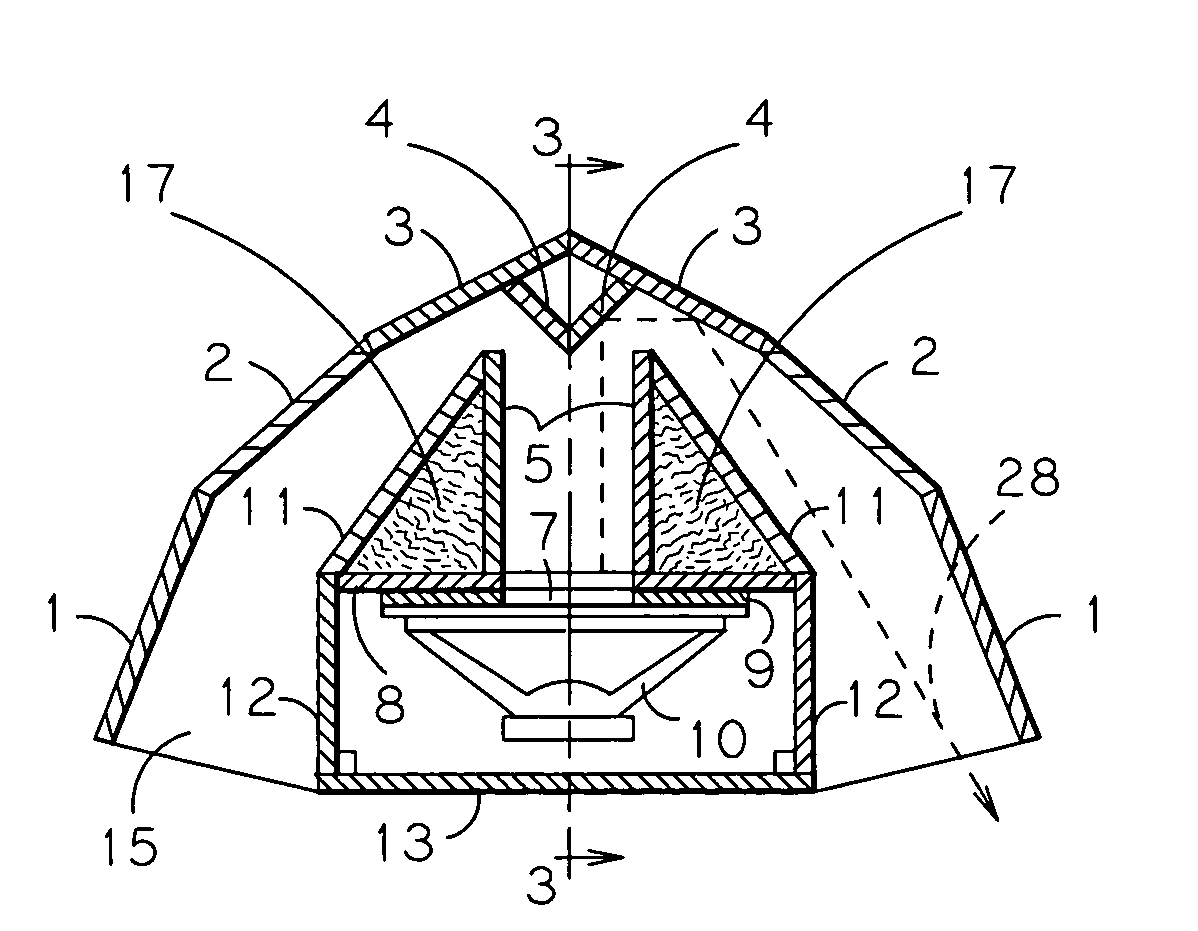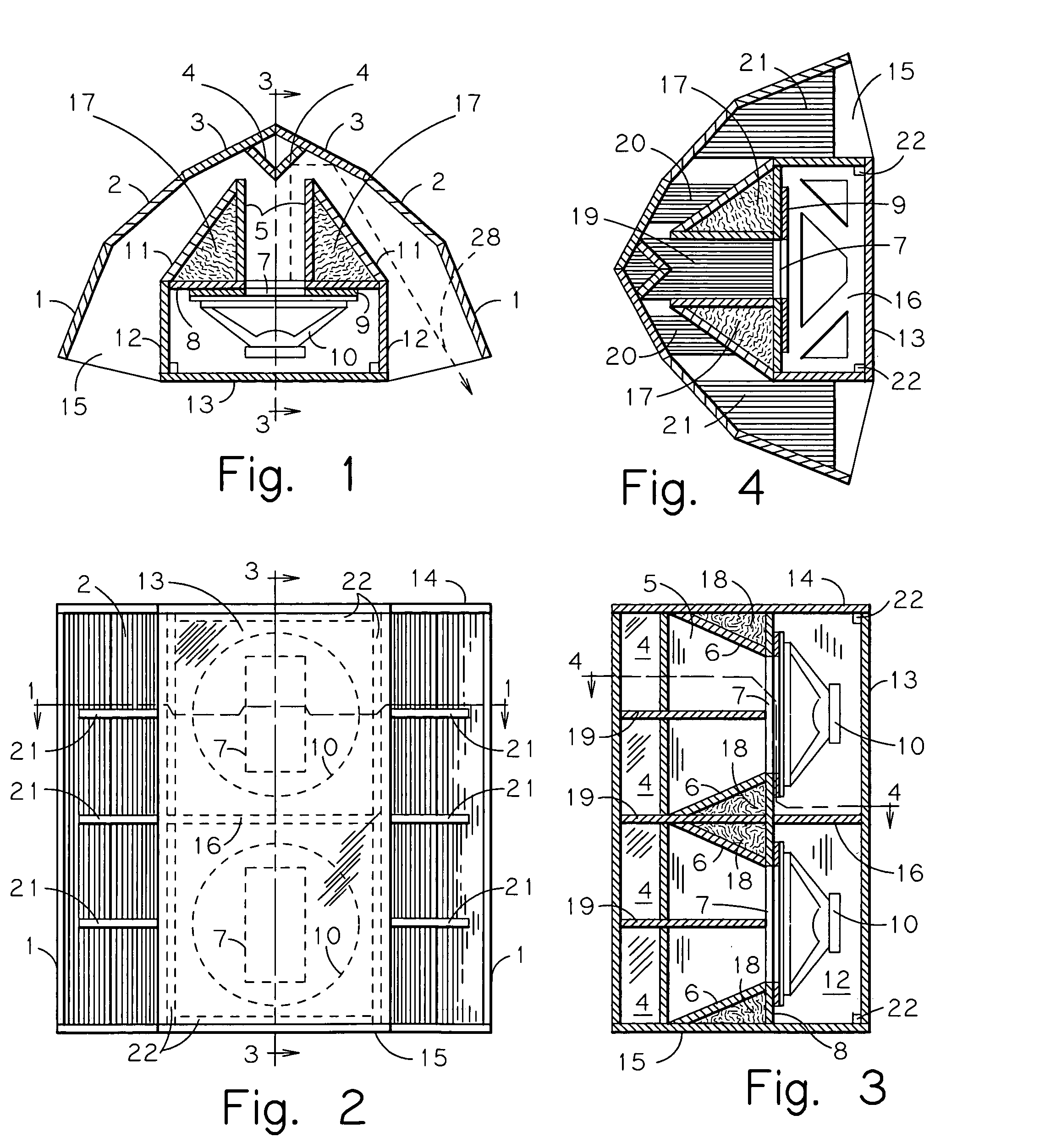Convertible folded horn enclosure
a horn enclosure and folding technology, applied in the field of loudspeaker enclosures, can solve the problems of increasing the overall weight and construction complexity, splay angles provide physical limitations to the upper frequency limit, and the added complication and weight of including external side walls, so as to achieve high output capability, increase power handling, and high output
- Summary
- Abstract
- Description
- Claims
- Application Information
AI Technical Summary
Benefits of technology
Problems solved by technology
Method used
Image
Examples
Embodiment Construction
[0033]The current invention consists of a folded exponential-horn enclosure which is symmetrical in both horizontal and vertical planes which is contained within a substantially parabola-shaped outer shell as formed by the rear-channel walls. The overall mouth size for an ⅛ space horn (as measured at the terminal exit) required for the given Fc of 38 Hz is approximately 800 square inches in area (where further waveform expansion presumably takes place outside of the enclosure, as is typical), and therefore, the invention in its optimal state is approximately 39 inches in height, which is also determined to present the optimum height for the effective propagation of a top-mounted midrange and / or high frequency horns to a seated audience.
[0034]The preferred embodiment of the invention can be seen in FIGS. 2, 3, 9 and 10. The preferred embodiment of the invention embodies two 15-inch drivers needed to achieve the appropriate channel size at the rear of the enclosure. The invention, bei...
PUM
 Login to View More
Login to View More Abstract
Description
Claims
Application Information
 Login to View More
Login to View More - R&D
- Intellectual Property
- Life Sciences
- Materials
- Tech Scout
- Unparalleled Data Quality
- Higher Quality Content
- 60% Fewer Hallucinations
Browse by: Latest US Patents, China's latest patents, Technical Efficacy Thesaurus, Application Domain, Technology Topic, Popular Technical Reports.
© 2025 PatSnap. All rights reserved.Legal|Privacy policy|Modern Slavery Act Transparency Statement|Sitemap|About US| Contact US: help@patsnap.com



